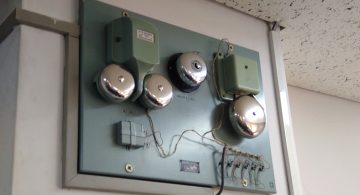この記事は1年以上前に書かれたもので、内容が古い可能性がありますのでご注意ください。
Today, I want to share some knowledge about widely used and well know music instrument – the guitar.
Although, it is quite difficult to find someone who doesn’t know about it, in some sense much less people know about it history, origins and usage.
The guitar had its primitive origins in the ancient Near East.
Clay plaques excavated from Babylonia, dated circa 1850 B.C., show figures playing musical instruments, some bearing a general resemblance to a guitar and having a distinctly differentiated body and neck.
Later evidence from ancient Egypt indicates a necked instrument with marked frets about the neck. A stringed instrument from ancient Rome incorporates a wood soundboard with five groups of small sound holes.
During the Middle Ages, guitars with three, four, and five strings co-existed.
The Guitarra Latina had curved sides and is thought to have come to Spain from elsewhere in Europe. The Guitarra Morisca, brought to Spain by the Moors, had an oval soundbox and many sound holes on its soundboard.
By the fifteenth century, four double-string guitars, similar to lutes, became popular, and by the sixteenth century, a fifth double-string had been added.
In this period of time, composers wrote mostly in tablature notation.
Italy was the center of guitar world during the 17th century, and the the Spanish school of guitar making only began to flourish late in the 18th century after the addition of the sixth string.
During the 19th century, improved communication and transportation enabled performers to travel widely and the guitar became a widely known instrument.
Guitar music became especially popular in Spain and Antonio de Torres developed the Spanish guitar in its modern form, with a broadened body, increased waist curve, thinned belly, improved internal bracing, single string courses replacing double courses, and a machined head replacing wooden tuning pegs.
While most of the credit for the early development of the acoustic guitar goes to Europeans, today’s steel-string acoustic guitars were developed in America.
During the early 20th century, when European emigrants were coming to America in droves, there were a number of highly skilled instrument makers among them, including those who specialized in the steel-stringed acoustic guitar.
Two types of construction evolved: the flat-top guitar and the arch-top guitar.
Martin and Gibson were two of the earliest ― and most influential ― American acoustic guitar makers.
Modern guitars have six strings. Andres Segovia, a Spanish guitarist who lived from 1893 to 1987, helped establish the guitar as a concert instrument, adapting it to the complex music of modern composers and transcribing early polyphonic music.
His virtuoso playing inspired compositions by Manuel de Falla and Villa-Lobos.
Acoustic guitars are used most often in folk and jazz music.

A steel-string acoustic guitar developed in America
Electric guitar however had a different story.
From a popular culture standpoint, the electric guitar is one of the most important inventions of the 20th century.
More than any other instrument, it defines the tone and character of rock and roll music.
But when the electric guitar first hit the scene in the 1930s, few people saw its potential.
It took quite a while for the instrument to find its place in American music.
Despite the slow start, the electric guitar did find its place. It has inspired and defined entirely new types of music.
The electric guitar remains the most prominent instrument in rock music, and the most famous instrument ever to come out of the United States.
Engineers began experimenting with electrically powered instruments, such as music boxes and player pianos, in the 1800s.
But the first attempts at an amplified instrument did not come until the development of electrical amplification by the radio industry in the 1920s.

An electric guitar developed by Gibson
One of the earliest innovators was Lloyd Loar, an engineer at Gibson Guitar Company.
In 1924, Loar developed an electric pickup for the viola and the string bass. In Loar’s pickup design, the strings passed vibrations through the bridge to the magnet and coil, which registered those vibrations and passed the electric signal on to an amplifier.
The first commercially advertised electric guitar, made by the Stromberg-Voisinet company in 1928, utilized a similar pickup, with vibrations being picked up from the soundboard.
The goal of these early innovators was to amplify the natural sound of the guitar, but the signal was too weak.
It was only when engineers utilized a more direct pickup system, in which the electromagnet registered string vibration from the strings themselves, that the modern electric guitar became a reality.
The first commercially successful model, the so-called “Frying Pan,” was developed and marketed by George Beauchamp and Adolph Rickenbacker in 1932.

Diagram from Gibson’s original pickup patent, 1937
The Rickenbacker “Frying Pan” was an electric Hawaiian model, played flat in the lap, and it caught on immediately with Hawaiian-style guitarists.
The standard or “Spanish” style electric guitar, however, sounded so different from an acoustic guitar that it was slow to be accepted.
The first artist to develop a playing style unique to the electric guitar was Charlie Christian (in 1939). At the same time, a few individuals began experimenting with a new kind of electric guitar, using the same pickup as earlier designs but mounting the pickup on a solid block of wood.
Les Paul, who was already a well-known acoustic guitarist, built such a guitar on a four-by-four piece of pine and nicknamed it “The Log.”
Leo Fender, a former radio repairman, introduced a mass-produced solid-body electric guitar in 1950, and Gibson introduced a model endorsed by Les Paul himself in 1952.
The solid-body guitars didn’t have the feedback problems that characterized hollow-body electric guitars, and they had greater sustain.
Engineers began experimenting with electrically powered instruments, such as music boxes and player pianos, in the 1800s.
But the first attempts at an amplified instrument did not come until the development of electrical amplification by the radio industry in the 1920s.

A Les Paul guitar
In the 1950s and 1960s, rock stars secured Gibson and Paul’s designs, as well as Fender’s famous Stratocaster, a permanent place not only in American culture, but in a world culture as well.
Since then, every generation has found a surprising new way of making the instrument sing. By all accounts, its potential is limitless.

A Stratocaster guitar
Denis






 2022/09/02
2022/09/02 2021/12/10
2021/12/10 2021/07/09
2021/07/09 2020/04/03
2020/04/03 2018/03/23
2018/03/23 2018/03/09
2018/03/09 2017/12/20
2017/12/20 2017/11/21
2017/11/21